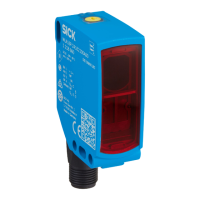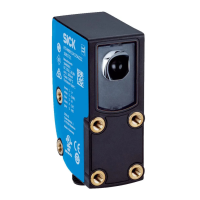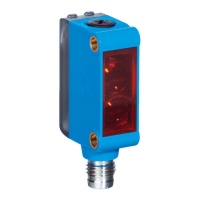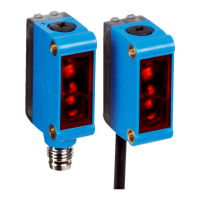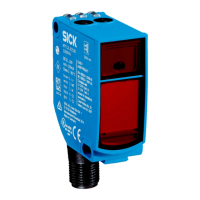OPERATING INSTRUCTIONS| Bulkscan LMS5118014829/ZNC5/2017-06-06| SICK
Subject to change without notice
13
PRODUCT DESCRIPTION
3 Product description
This chapter provides information on the special features and properties of the Bulk-
scan. It describes the construction and operating principle of the sensor, in particular
the different operating modes.
Pleaseread this chapter before mounting, installing and commissioning the sensor.
3.1 Special features of the Bulkscan
• Non-contact,opticalmeasurementofvolume,volumeowrate,mass,andmassow
rate of bulk goods.
• Continuous, delay-free measurement.
• High resolution due to short time between the laser pulses and high angular resolu-
tion.
• Integrated determination of the center of gravity of the bulk good.
• Calculationofvolumeowrateandmassowratewithsummationtoformtotal
volume and total mass.
• Determination of bulk height.
• Monitoring of the bulk edges.
• Monitoring of the conveyor belt edges.
• Scanning range up to 20 m with 3% remission.
• Doesnotrequireaofcialapproval.
• Simple installation.
• Low maintenance costs.
User-friendlyprogramSOPASET(www.sick.com/SOPAS_ET)forthecongurationand
visualization of the parameters under Microsoft Windows®.
3.2 Operating principle of the Bulkscan
3.2.1 Measurement principle
The Bulkscan scans the surface contour of the measured object using a rotating laser
pulse. The Bulkscan calculates the distance of each point measured, and therefore the
surfacecontour,fromthetimethelaserpulsereectedbythemeasuredobjecttakes
to propagate.
During commissioning the Bulkscan initially learns the reference contour (empty con-
veyor belt) and uses this information to calculate the reference area A
R
(see Fig. 2). In
measuringmodetheconveyorbeltislledwiththebulk.TheareaA
M
calculated from
the bulk contour is smaller than the reference area. The cross-sectional area of the bulk
A
S
is given by the difference between the areas.

